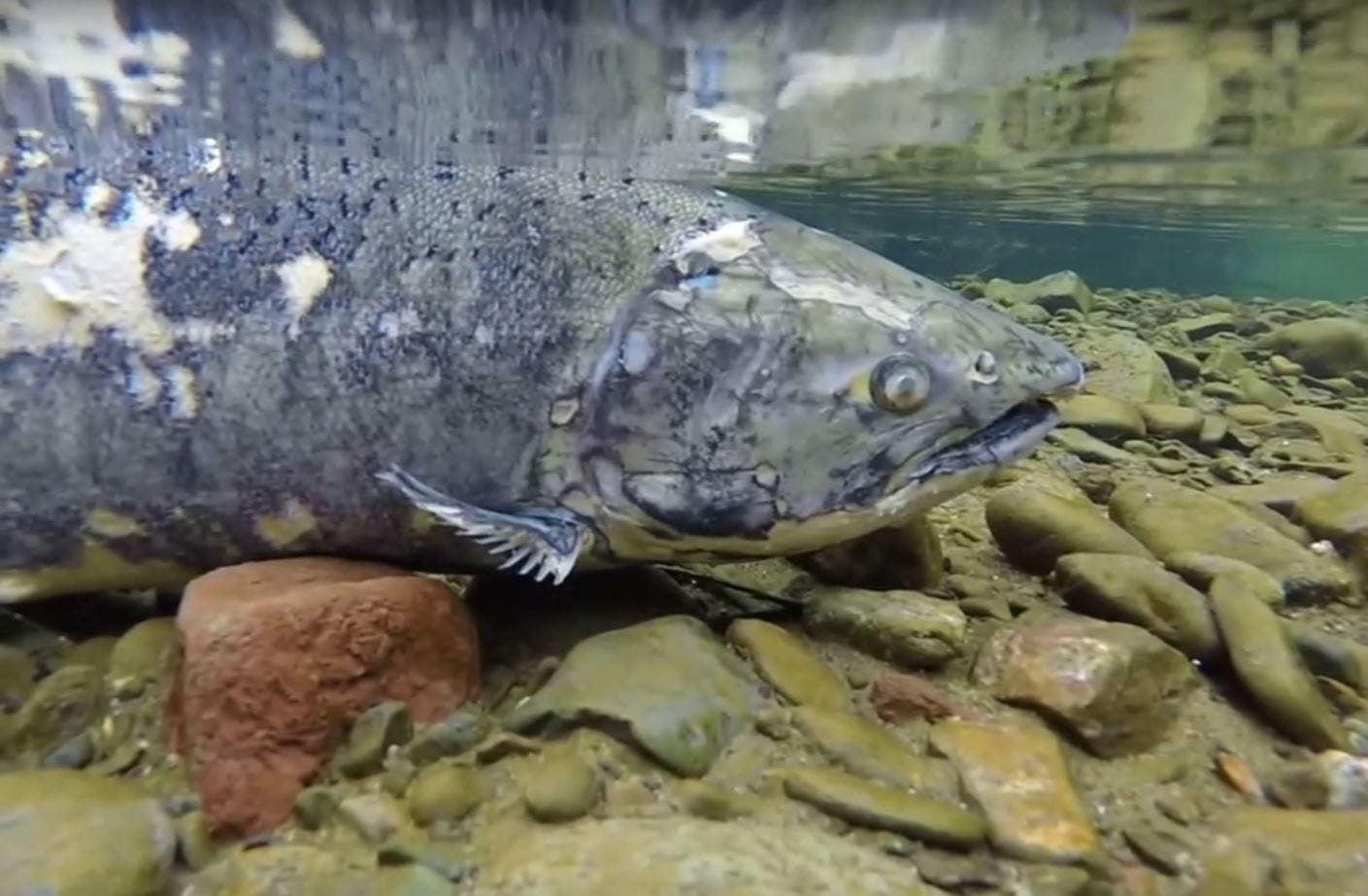Salmon turn into zombies
Their flesh actually starts to rot and decay while they're still alive.

We love our salmon. From sashimi to smoked salmon, we love that healthy goodness due to its high vitamin D, omega-3 fatty acids, and protein content.
When not being served on a plate in front of us, we tend to think of those mass migration events where they’re swimming like crazy upstream.
What we don’t know is how crazy these migration events are. Known as a salmon run, this is when salmon swim from the ocean back upstream to riverbeds to spawn.
Salmon are anadromous fish, meaning they are born in freshwater, migrate to the ocean, and then return to freshwater to spawn. This cycle begins with the hatching of eggs in freshwater streams and rivers. The young salmon, known as fry, spend several months to a few years in their natal waters before making the journey downstream to the ocean. There, they spend the majority of their adult lives, growing and maturing.
Most salmon return to the same rivers where they were spawned. It’s theorized that salmon know which river to return to due to their strong sense of smell. Salmon use the chemical cues unique to their natal river to navigate their way back to their birthing river to spawn.
That said, this doesn’t necessarily mean that all salmon return to their natal river. Some also stray from their home areas and travel to other, nearby river streams. This is important in colonizing other habitats.
And it’s when they start to spawn that things start to get a bit crazy.
Their bodies start to deteriorate; their once-sleek, silver scales turn darker, often taking on reddish hues. Males develop hooked jaws, known as kypes, and their teeth grow larger and sharper, which they use to fight for territory and mates. These changes, while crucial for reproduction, also mark the beginning of their decline.
Internally, the salmon's organs start to break down. Their immune systems weaken, making them susceptible to infections and parasites. Fungal growths often appear on their skin, adding to their ghastly appearance.
In short, their bodies literally start to rot and decay. Hence their name, zombie salmon.

Once they reach their spawning grounds, salmon engage in a frenetic bout of activity. Females dig nests, called redds, in the gravel of riverbeds where they lay their eggs. Males compete fiercely to fertilize these eggs, often engaging in brutal battles.
After spawning, the adult salmon, now severely weakened and exhausted, succumb to death.
But there comes a really important question: can you still eat zombie salmon? The answer is you can, but it won’t taste good, and you probably shouldn’t.
The fat that makes the salmon so delicious has been burned as the salmon makes their way home to spawn. On top of that, dead fish have higher levels of bacteria than their live counterparts.
So, there’s a strong chance of you getting sick if you eat one. My advice? Find another delicacy to enjoy.




